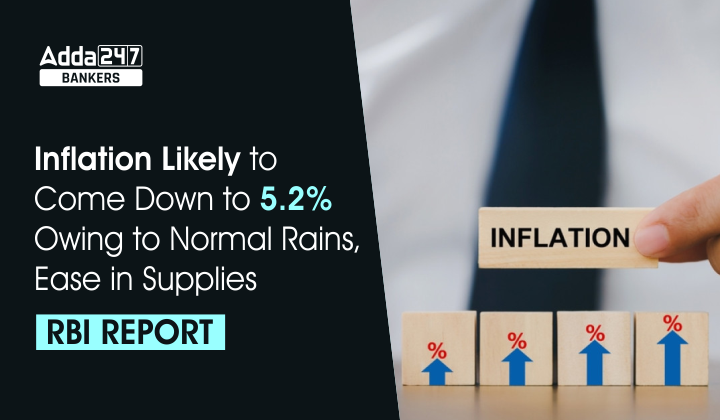Table of Contents
Inflation likely to come down to 5.2% owing to normal rains, ease in supplies: The central bank’s prediction of lower inflation is based on the assumption of normal rainfall and the continued normalization of global supply chains in the absence of exogenous shocks. The Reserve Bank of India (RBI) anticipates retail inflation to fall to 5.2%, down from 6.7% for 2023-24. Over the past two and a half years, the world has already seen two huge shocks—the pandemic and the Ukrainian situation. A third shock is now in the form of aggressive monetary policy operations by central banks around the world.
What were the factors causing inflation?
- Retail inflation must be kept within a stipulated range of 2-6% by the central bank. However, since January 2022, inflation has exceeded the RBI’s upper tolerance range, primarily as a result of unfavorable supply shocks and the geopolitical unrest brought on by the war between Russia and Ukraine that started in late February.
- Food grains, edible oils, fertilizers, and energy sources including crude oil and natural gas are all major exports from both of these nations, and war between these two nations has increased the prices of these commodities leading to inflation in our country.
- Even though the forecast for the upcoming fiscal year appears comforting, upside risks still exist due to a variety of factors, including an increase in geopolitical tensions, higher crude and commodity prices, supply chain disruptions lasting longer than anticipated, and an increase in global financial market volatility as a result of aggressive monetary policy actions. Unseasonal rainfall, a decrease in Kharif crop output, or firming demand may further increase the upside risks.
How can inflation be controlled?
- In order to curb inflation, the Reserve Bank raised the benchmark repo rate from 0.50% to 5.9%. This fiscal year, it increased the policy repo rate by 140 basis points, or 1.4%, between May and August.
- According to the RBI’s report, early resolution of geopolitical tensions could help in controlling inflation.
- The easing of the pandemic will improve supply circumstances, which will lead to further corrections in commodities prices, decreasing global demand, and lower inflation.
- The RBI anticipates that through the first three quarters of 2022–2023 (till December), inflation will continue above the upper tolerance threshold of 6% and that it will start to decline in January 2023.




 Weekly One Liners 31st March to 06th Apr...
Weekly One Liners 31st March to 06th Apr...
 05th April 2025 Current Affairs | Daily ...
05th April 2025 Current Affairs | Daily ...
 03rd April 2025 Current Affairs | Daily ...
03rd April 2025 Current Affairs | Daily ...





